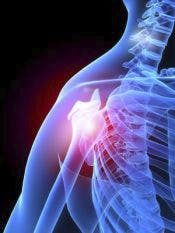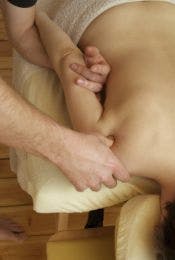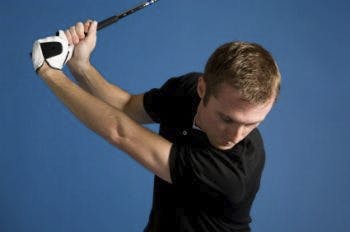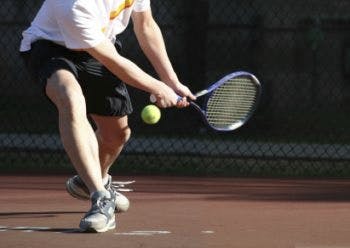Rotator Cuff Tears/Shoulder Impingement
The shoulder is a highly mobile joint that relies upon proper alignment and mobility of the shoulder blade and spine. The rotator cuff is a group of muscles that surround the “ball” or “head” of the shoulder allowing it to stay centered within the joint as the arm is elevated. This “centering” is extremely important as the shoulder joint is inherently highly unstable; picture a baseball spinning in the middle of a dinner plate. Resulting from this complexity, it is common that once a biomechanical flaw occurs that the rotator cuff gets compressed between the “ball” of the shoulder and the tip of the shoulder blade (the acromion process), which creates a roof to the “ball” of the shoulder. From this compression, friction and rubbing occurs to the rotator cuff tendons (impingement), which creates inflammation and increased pressure within the joint. If this rubbing continues for a length of time a tearing may occur within the tendons. Furthermore, a tear may also take place as a result of a forceful blow, such as a fall onto the shoulder, in which the rotator cuff is forcefully compressed into the joint.
Symptoms include pain around the joint and possibly radiating pain down the front or outside aspect of the upper arm to the elbow joint. Typically pain results upon elevation of the arm and may even decrease once fully elevated (impingement). However, if a large tear is present the individual may not be able to elevate the shoulder without significant compensation, such as a shrug of the shoulder towards the ear.
Treatment involves modalities such as ultrasound, electro and laser therapy to decrease pain and inflammation, hands-on therapy to address spine, shoulder blade, soft tissue and shoulder joint mobility, exercises to develop the appropriate mix of mobility and stability allowing for appropriate biomechanical movement. Due to the complex nature of shoulder injuries, reoccurrence is common. The Generation’s rehab team will ensure that you fully understand the injury and self-help strategies to employ, in order to minimize future injuries.


Arm Pain and Tingling
Arm pain and tingling or numbness down the arm, may be resultant from injuries or biomechanical issues occurring at one or several other locations. Commonly the neck is a referral point for numbness travelling down the arm, resulting from disc or spinal issues. Furthermore, the shoulder may refer pain to the upper arm, while compression of a nerve at the elbow may send symptoms down the lower arm and into the hand. Since numerous structures may be involved, the skilled team at Generations will take you through an in-depth physical assessment to find the root of the pain. Treatment will address any biomechanical flaws responsible for the symptoms, by using manual techniques such as massage, joint mobilization and possibly spinal manipulation to address muscles and joint mechanics. Specific nerve stretching will be used to ensure proper neurologic dynamics once tingling and/or numbness has subsided. Modalities such as electrotherapy, laser and acupuncture may also be used to decrease pain.
Tennis Elbow/Golfer’s Elbow
Both Tennis Elbow (Lateral Epicondylitis) and Golfer’s Elbow (Medial Epicondylitis) refer to overuse injuries associated with the muscles around the elbow. Symptoms frequently include a loss of grip strength, tenderness when touching the muscles on the inside or outside of the elbow, pain with bending the wrist or rotating the lower arm. Treatment includes Graston Technique and other soft tissue techniques to decrease the amount of scar tissue and restore pliability of the tissue, joint mobilizations, stretching and strengthening exercises, acupuncture and other modalities such as laser and electrotherapy to reduce pain and inflammation.





